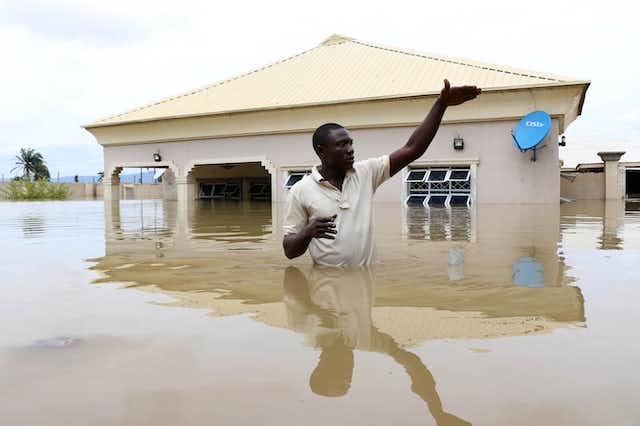By Ignatius Ushie
The Nigerian Meteorological Agency (NiMet) has said there will be earlier than expected long-term average rainfall in most parts of the country, noting that some parts of the country such as Katsina, Zamfara, Kano, Jigawa, Yobe, Cross River, Ebonyi, Imo, and Rivers are likely to experience delayed onset of rainfall.
NiMET also warned that floods will likely occur in many parts of the country in year 2023.
The Minister of Aviation. Senator Hadi Sirika said this during the launch of the 2023 Seasonal Climate Prediction (SCP) in Abuja.
According to the forecast, the earliest onset is likely to occur on or around March 2, 2023 in Bayelsa, Rivers, Akwa Ibom, and their environs.
NiMet also said strong windstorms across the country and sandstorms in the extreme northern states can occur before the onset of rainfall.
Highlighting the forecast, Sirika said: “the annual total rainfall is predicted to be normal to above normal in most parts of the country.
According to him, “the rainfall onset date is predicted to be earlier than the long-term average in most parts of the country, adding that parts of Katsina, Zamfara, Kano, Jigawa, and Yobe in the North, and Cross River, Ebonyi, Imo, and Rivers in the South, are likely to experience a delayed onset.”
On when the rain will start and its intensity, the minister said: “The onset dates will range from March 2 to July 7, 2023.
“The onset is expected to become established in early March from the coastal states of Bayelsa, Rivers, and Akwa Ibom; in April, for the inland states of the South; in May, around the central states; and around July, in the northern states…
“Parts of Yobe, Jigawa, Kano, Bauchi, Jigawa, Kaduna, and FCT are likely to observe below normal to near normal annual rainfall amounts.
“The annual rainfall amount is expected to range from 420 millimetres (mm) in the far northernmost parts to 3,253 mm in the coastal areas.”
Speaking on the likelihood of dry spells, Sirika said: “dry spell occurrences have characterised our seasons in recent years. In 2023, we should also prepare for its occurrence between June and early July as dry spell lasting between 15 and 21 days is in the forecast, especially from the central parts of the country to the North.
“When compared to the last years, the little dry season (August Break) for 2023 is expected to be less intense. It is expected to last between 14 and 20 days starting from late July, especially over the Southwest of the country.”
On when the rains will stop, he said: “An early End of Season (EoS) is predicted over parts Osun, Ondo, Edo, Delta, Imo, Bayelsa, Rivers, Akwa Ibom, Ogun, Lagos, Yobe, Adamawa, Niger, Nasarawa, and Kogi.
“However, an extended rainfall season is predicted over parts of Gombe, Kaduna, Kwara, Enugu, Anambra, western Ogun, and Lagos.
“The end of season period is expected to range from September 26 till December 25.”
For farmers and those in the Agricultural sector, NiMet said: “The length of the growing season in most places in the country is likely to be near the long-term average, except for some states, like Katsina, Jigawa, and Kano, where shorter than the long-term average length of the growing season is anticipated.
“The season is expected to range from 84 to 283 days. Abuja and surrounding states are expected to witness between 170 and 230 days.”
Earlier, the Director Generalof NiMET, Prof. Mansur Matazu said there will be likely flood which according to him is a natural occurrence: “Flooding is a natural event, and with the increase in climate change activities, we are going to see more floods”.













